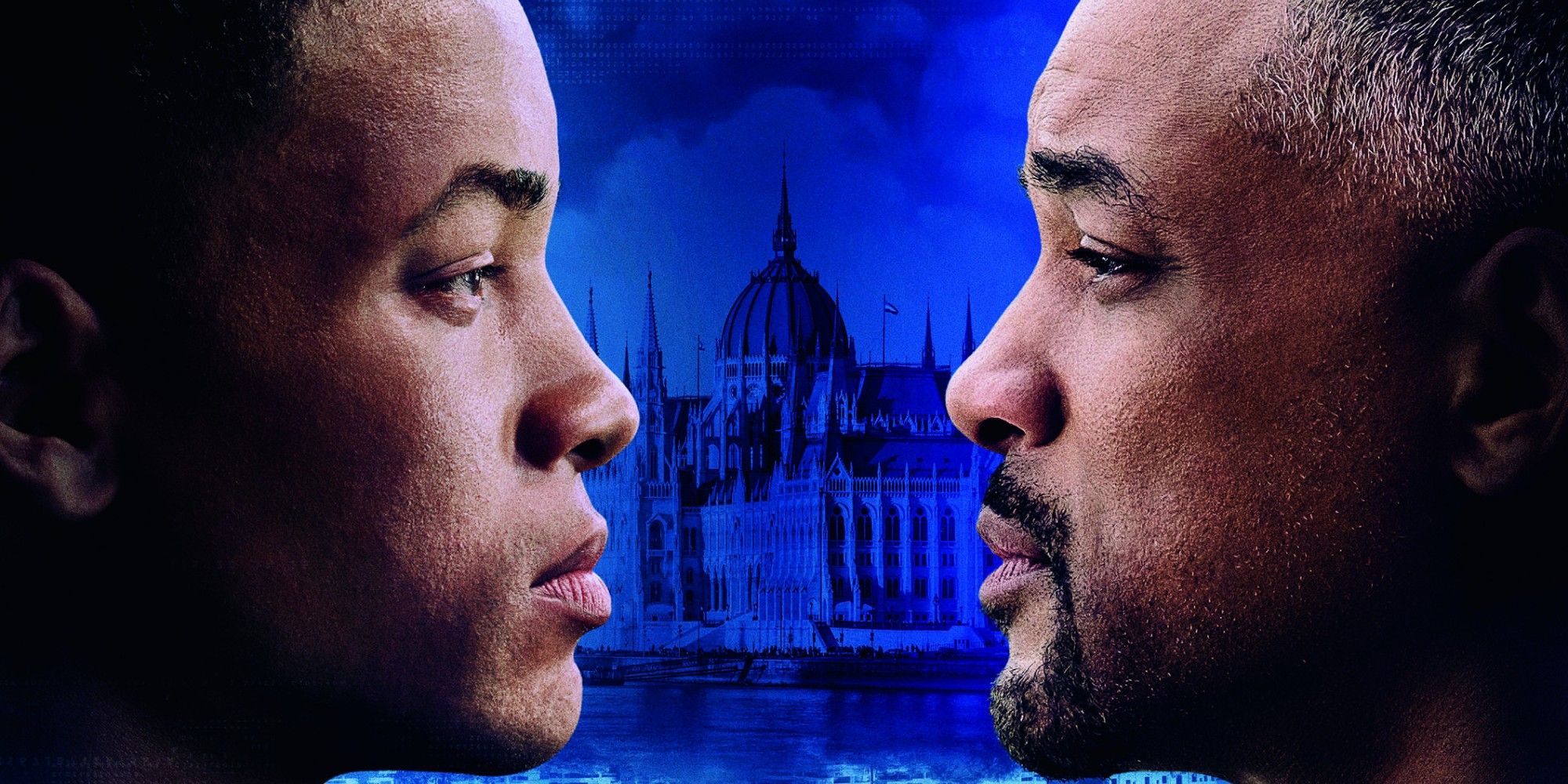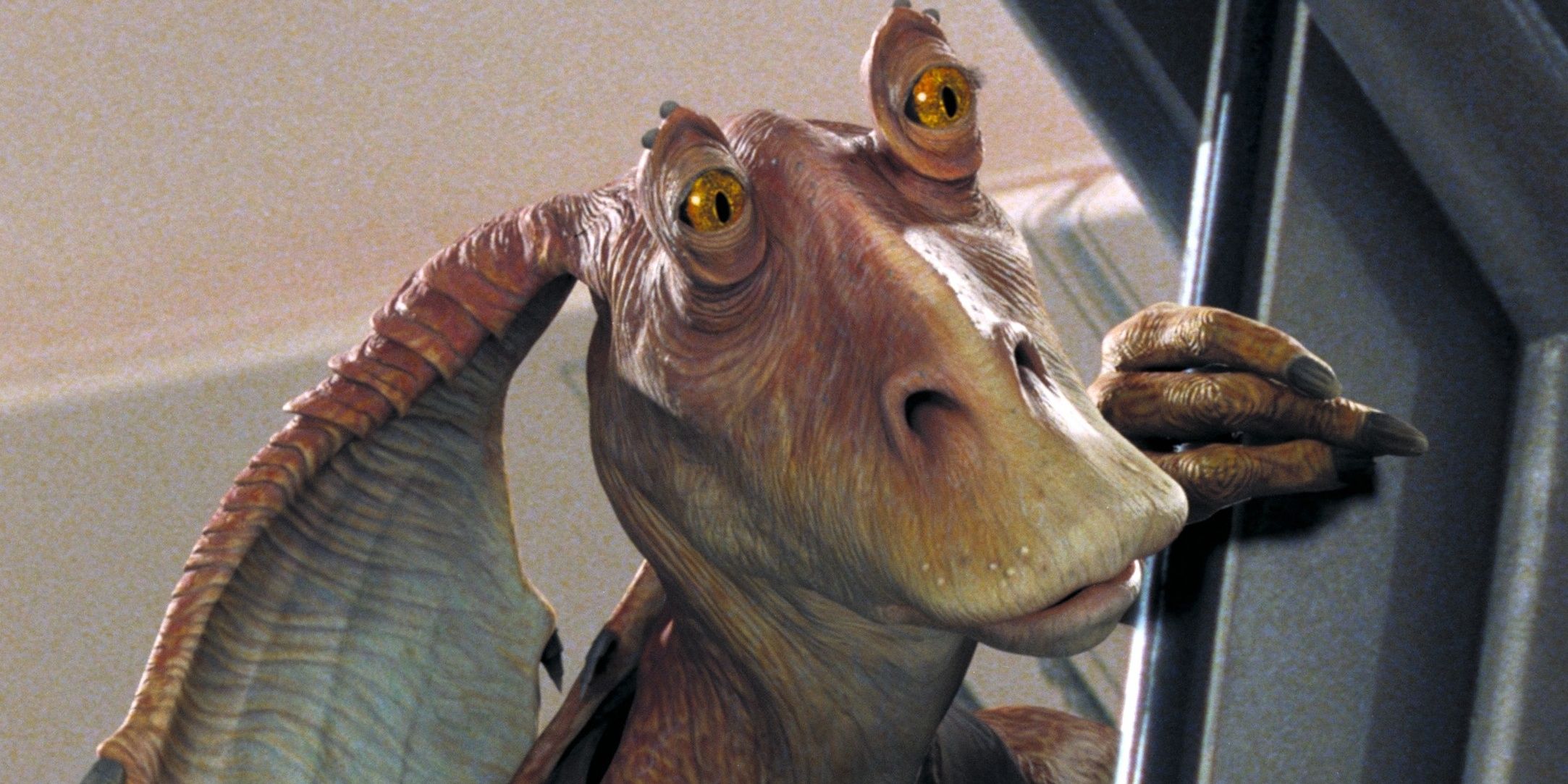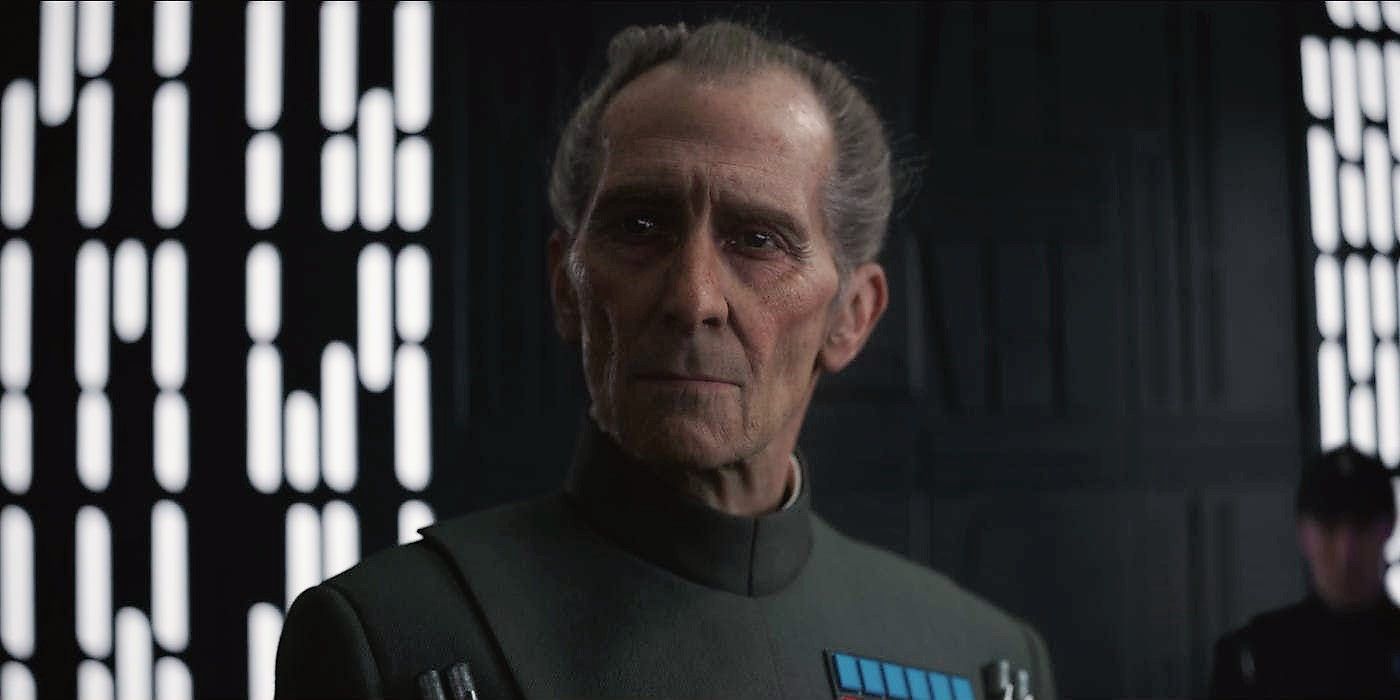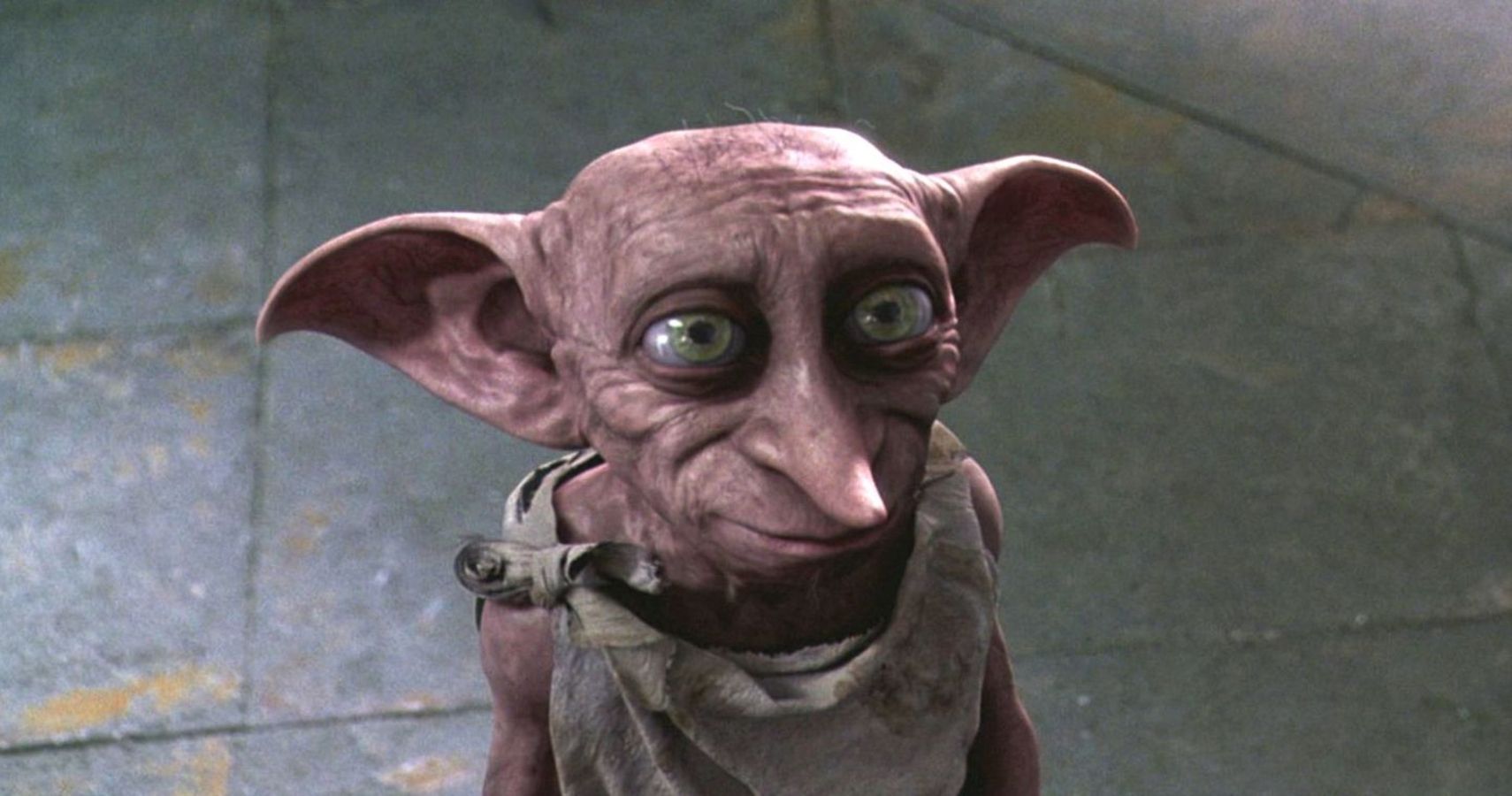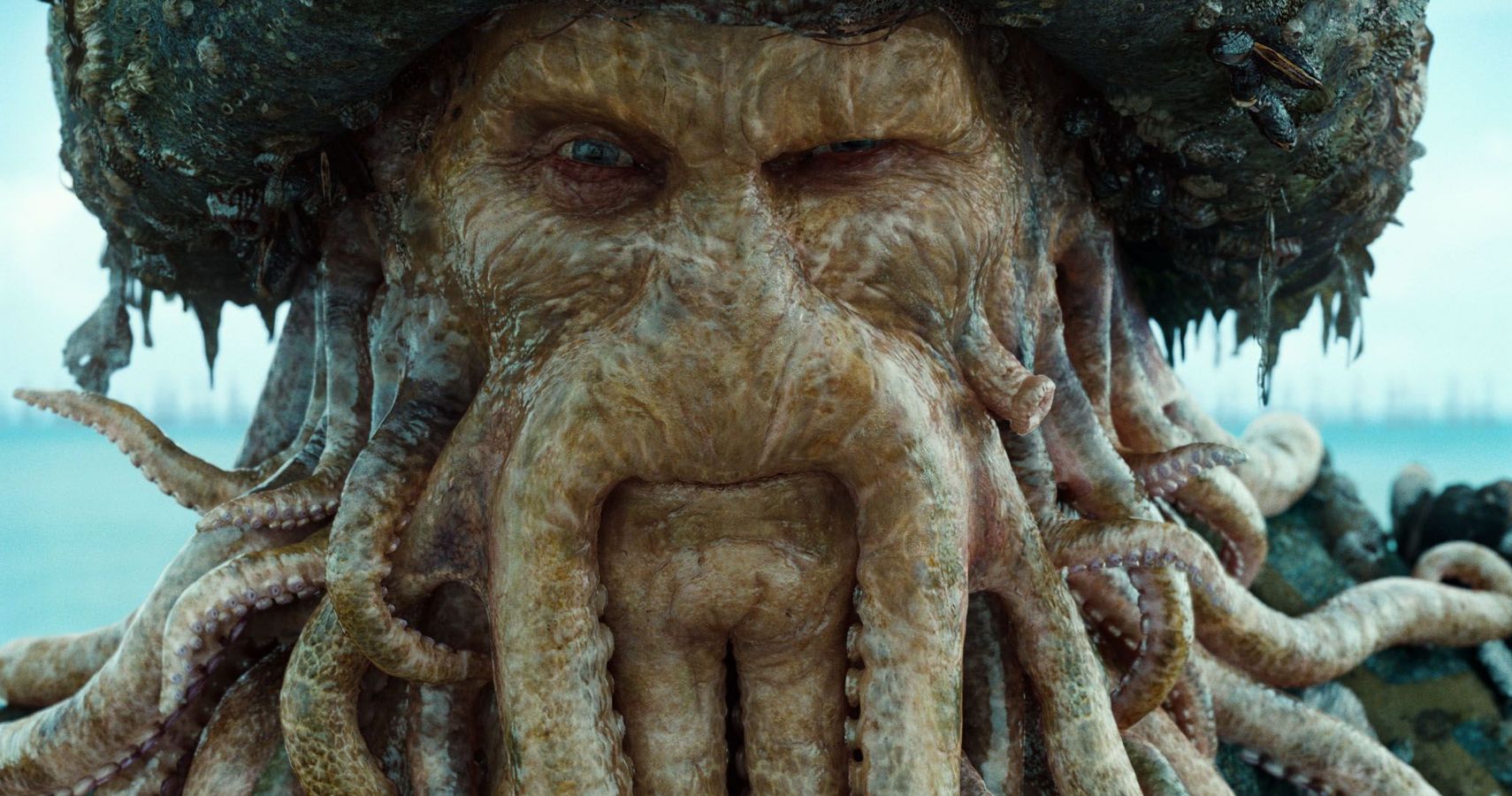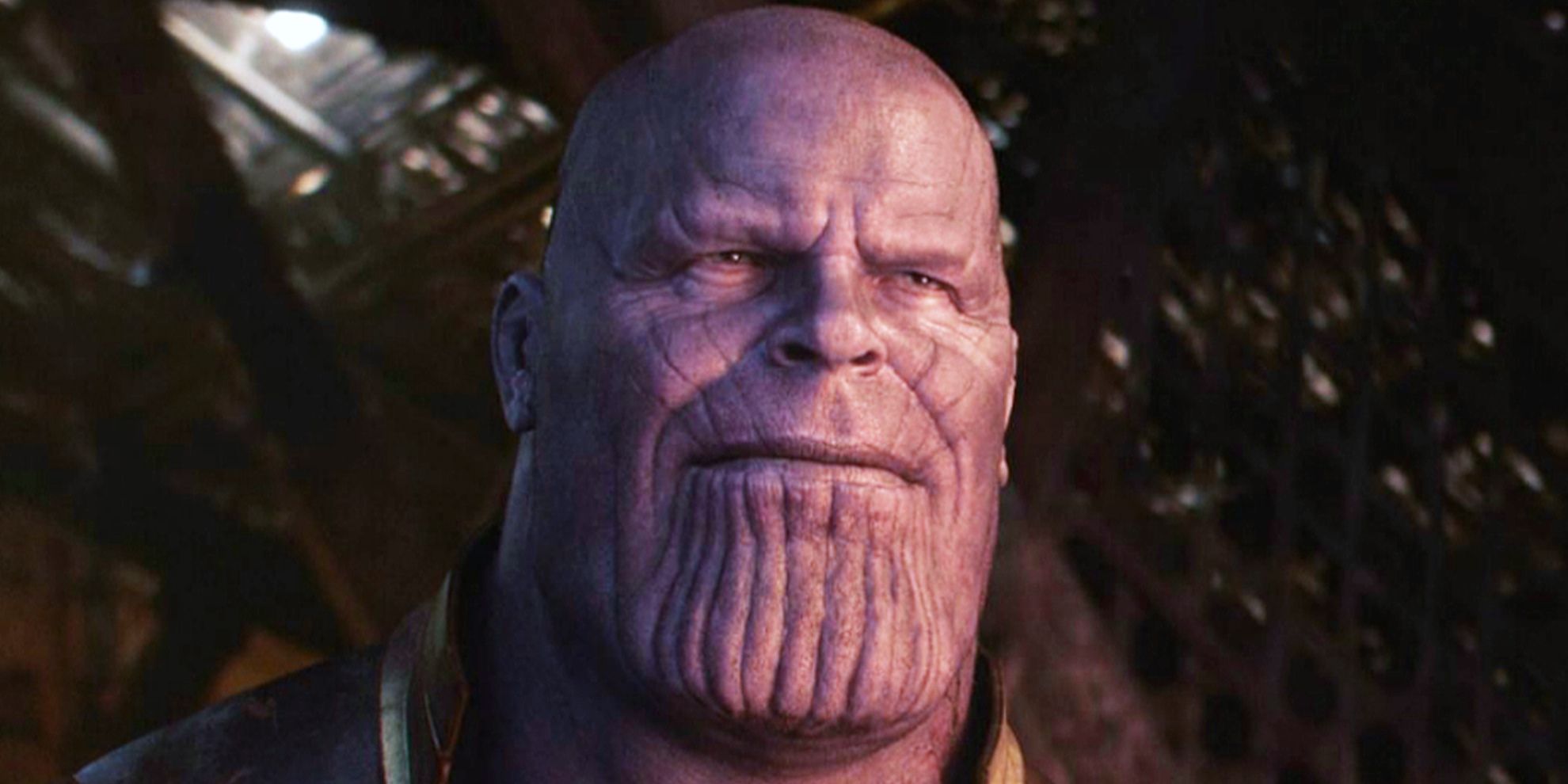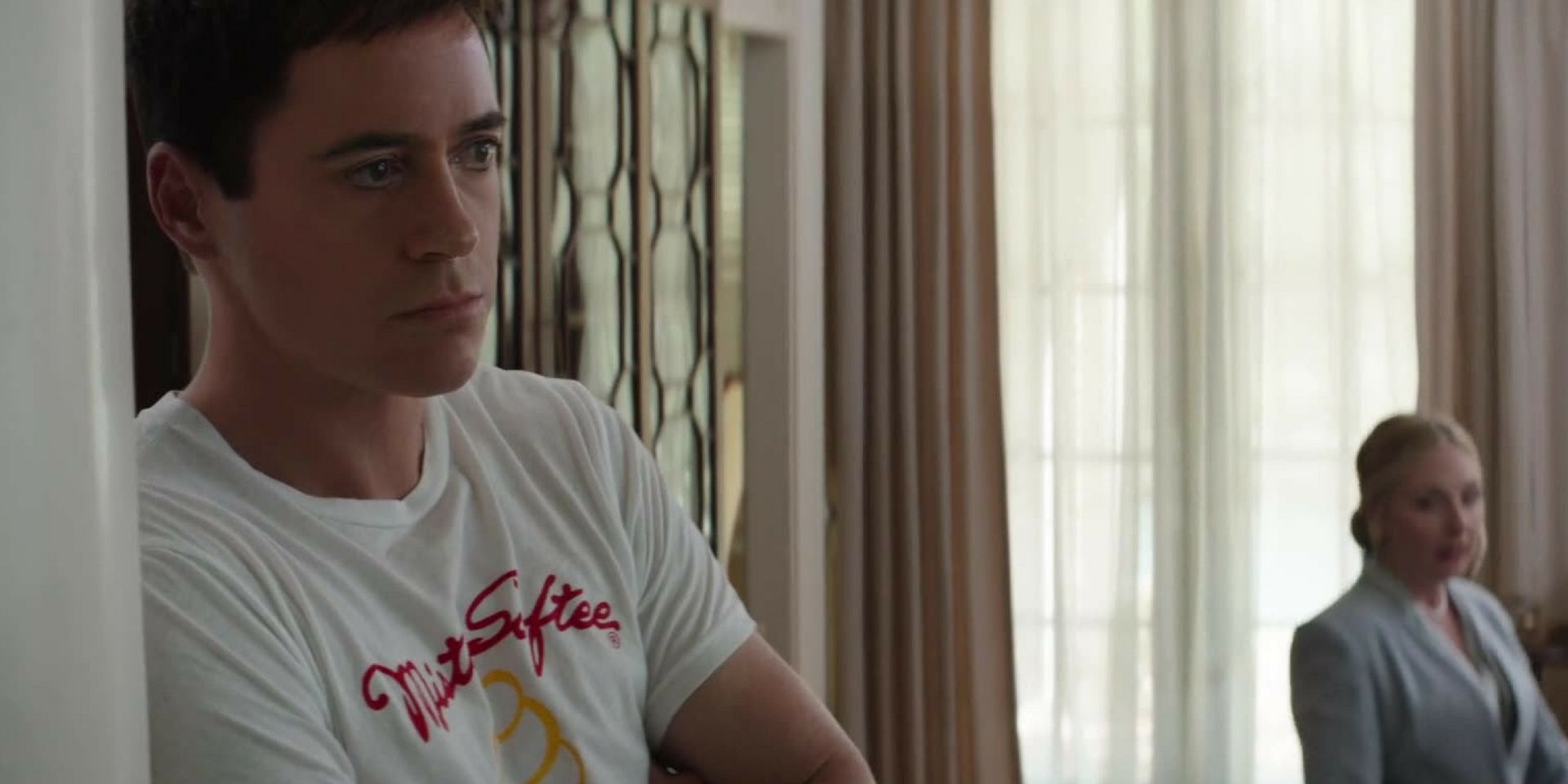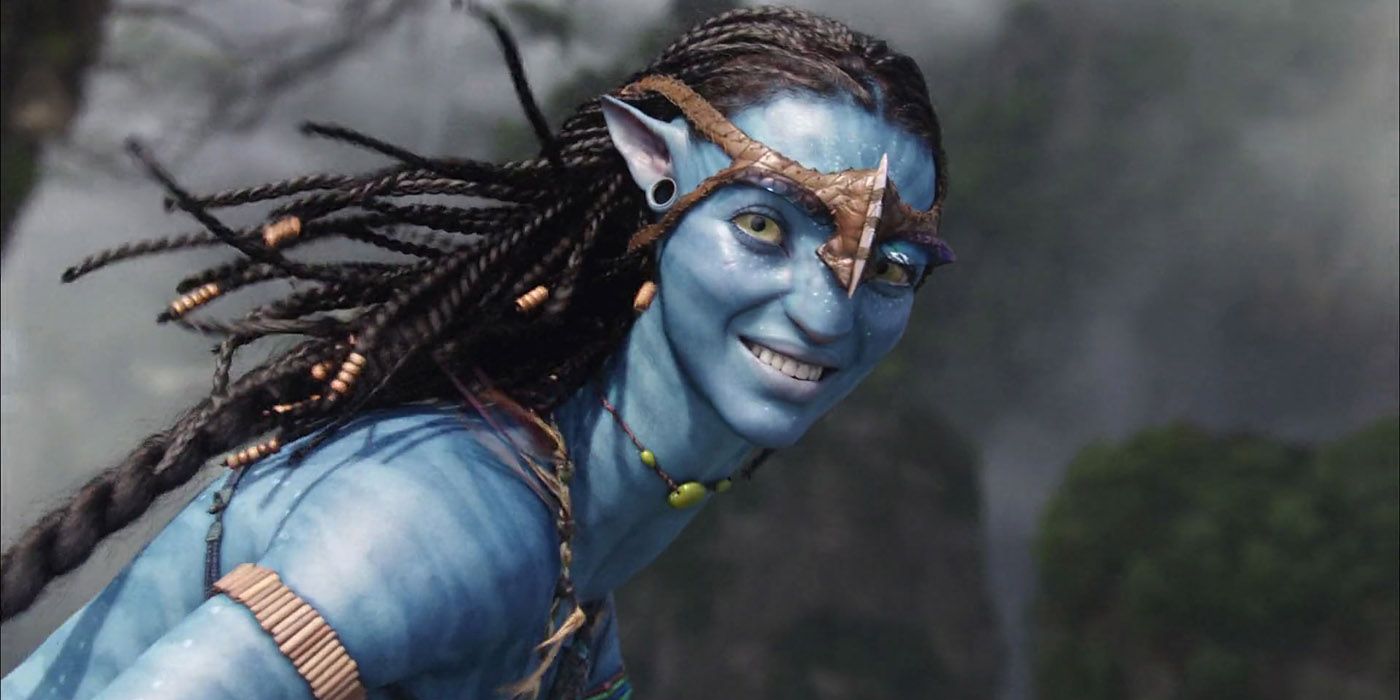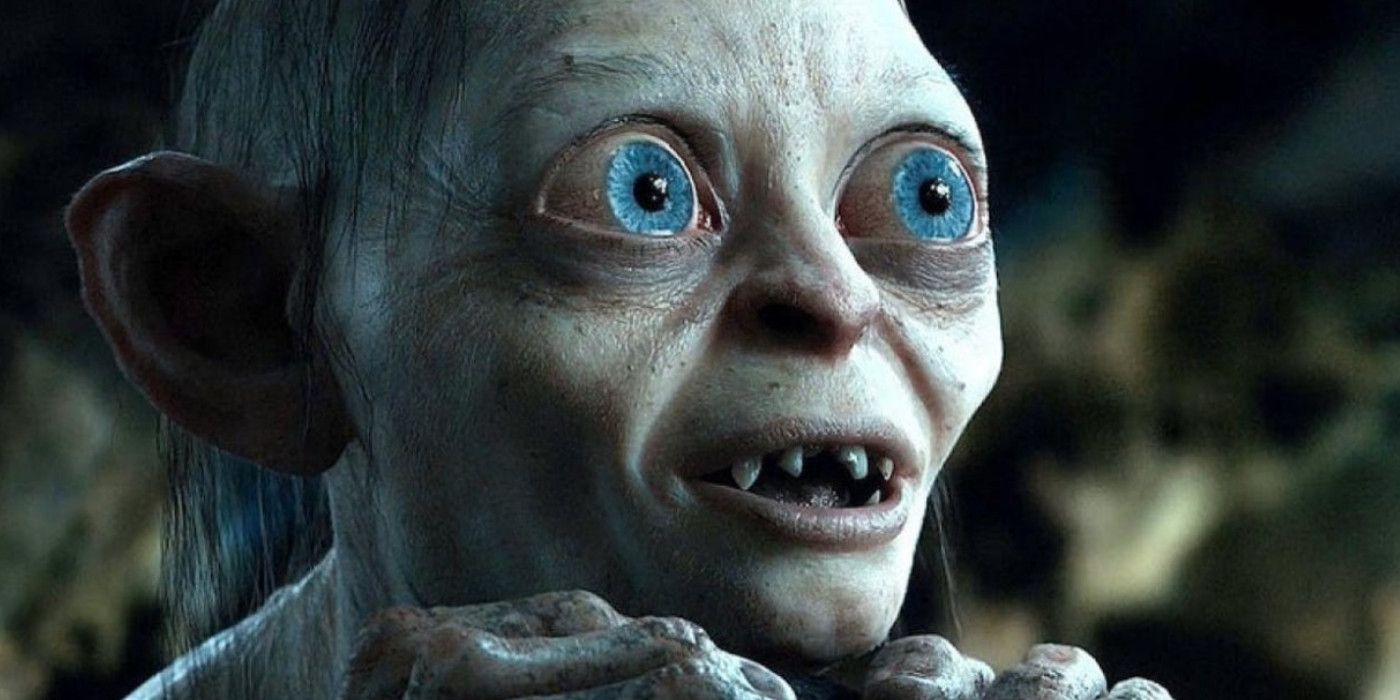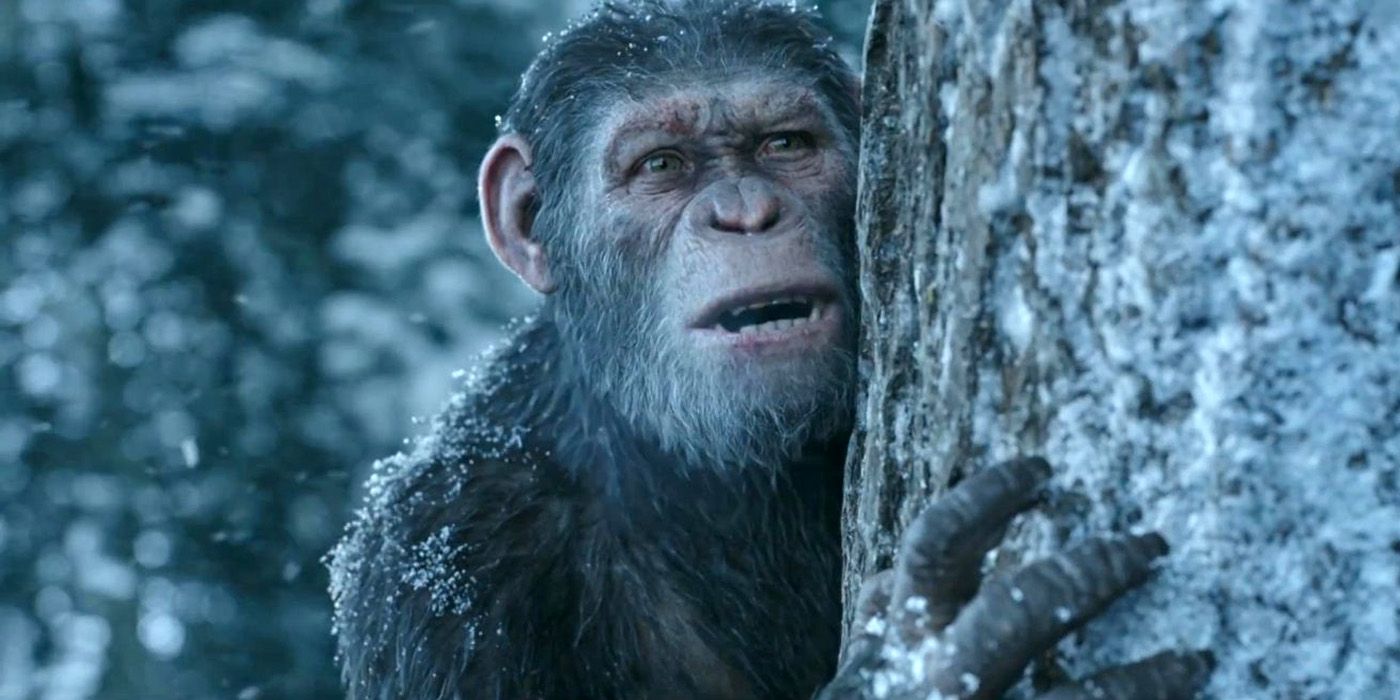It would be no understatement to say that Gemini Man isn’t everybody’s cup of tea. Sure, it’s entertaining enough but not compared to other movies of its genre and the plot, of young Will Smith tying to kill old Will Smith, sounds like something straight from the 1990s.
But regardless of what you think about the blockbuster, it’s fair to say that the movie accomplishes something pretty special regarding it’ use of CGI. The way they seamlessly have two Will Smith’s on-screen at the same time is an astonishing achievement and technical wonder. So we now take a look at 10 other time where CGI was amazingly used on characters and explain our reasoning along the way.
Jar Jar Binks: Star Wars
The original Star Wars trilogy wowed audiences due to its phenomenal use of practice effects, wonderful world-building and inspirational and relateable characters. George Lucas took a gamble when it came to doing the prequels, however, choosing instead to place his faith in CGI as he told the story of Anakin Skywalker’s transformation into Darth Vader.
The first movie of the prequels, The Phantom Menace, introduced us to the character of Jar Jar Binks. And while he was divisive, he was a huge technological achievement at the time, becoming the first-ever character to be entirely CGI with actor Ahmed Best then providing the voice work.
Grand Moff Tarkin: Star Wars
Star Wars doesn’t make the list once, but twice, due to the way they digitally brought Peter Cushing back to life for spin-off Rogue One in 2016. Fans were left shocked when Grand Moff Tarkin made a cameo in the movie, with his character dying 40 years previously and the actor sadly passing away in 1994.
Using actor Guy Henry as a template, Disney were able to use technology to bring Tarkin back into the fold. Given how the movie was about the Empire’s rise to power, it certainly made sense. And Rogue One also deserves credit for the amazing CGI used to make Leia Organa return as a younger version of herself.
Dobby: Harry Potter
Given how important Dobby is to the second Harry Potter book and movie, The Chamber of Secrets, Warner Bros opted to play it safe. Rather than risk fan backlash by having somebody play the house elf in a costume, they instead chose to fork out plenty of CGI money on animators to build a realistic and lifelike Dobby.
And while they used practical effects to some degree, Dobby looks the part. He doesn’t look out of place in the story and would return for Deathly Hallows: Part 1, when he’d look similarly lifelike. Such realism also made his death in that film that bit more emotional, with most people leaving the theatre with tears in their eyes.
Davy Jones: Pirates Of The Caribbean
While the first Pirates of the Caribbean movie, The Curse of the Black Pearl, succeeded in winning round fans not everybody was sold. Some complained that the CGI used on the skeletons looked like something from an amateur theme park and, consequently, Disney chose to up the stakes for the next two movies in the franchise, Dead Man’s Chest and At World’s End.
By doing that, they were able to take advantage of the technology at the time by creating Davy Jones. Voiced by Bill Nighy, he is regarded as one of the best out of the many villains created that Disney have given to fans. And while the two sequels to the first film failed to reach the same lofty heights, they still succeeded in giving us a thrilling trilogy.
MCU: Thanos
When Thanos was first introduced to the MCU back in 2014’s Guardians of the Galaxy, the purple titan’s appearance divided the fan base. Disney then made the bold decision to tinker with technology in a bid to bring the MCU’s big, bad villain to life in a satisfying manner for when he’d appear in both Avengers: Infinity War and Avengers: Age of Ultron.
And it certainly worked, with Thanos’ character now regarded as the best villain Marvel’s Cinematic Universe has to offer. He looks, moves and sounds incredible lifelike and that’s a testament to all the hard work that went on behind the scenes.
MCU: Tony Stark
With more money, comes more opportunity. Marvel movies sell like hot cakes these days with many flocking to see what their superheroes are fighting against next. But while the action sequences often take much of the spotlight, the hologram scene in 2016’s Captain America: Civil War deserves more attention than it gets.
In that moment, Disney de-aged the character of Tony Stark. And the use of CGI was extraordinary with it genuinely looking as if Robert Downey Jr had taken a trip in a time machine. De-aging characters is something we’re now primed to expect on a regular basis and it’s Marvel who have led the way on this front.
Neytiri
When Avatar released in 2009, the whole world went nuts for it. Here was a film franchise that seemed way ahead of its time, using CGI to create the breathtaking planet of Pandora and bring characters such as Zoe Saldana’s Neyteri, Sam Worthington’s Jake Sully and many, many more to life.
It was claimed that as much of 60 per cent of the movie was CGI - and Neytiri was the pick of the bunch. Her character put Saldana in the spotlight with many also calling for her to win an Oscar. She didn’t get close to the award - but we’re looking forward to seeing the character return when the sequel releases in 2020.
Dr Manhattan
Zack Snyder and overall VFX supervisor John "DJ" DesJardin both knew that, to create the character of Dr Manhattan for 2010’s Watchmen, they were going to have to go down the CGI route. But while they had concerns that it wouldn’t work out, there’s no denying it was spectacular.
To create Manhattan, they went with actor Greg Plitt for the bodywork. They then digitized Plitt in 3D and took high-definition video of the model before putting his features onto Billy Crudup. A complicated process but the end result made it worth the hassle.
Gollum
Andy Serkis’ voicework as Gollum made the Lord of the Rings character an instant icon. Creating him was no small task, however, with WETA visual effects supervisor Eric Saindon saying: “When we did Gollum, no one had really done a CG creature mixed with live action that you were supposed to believe was just a creature in the scene. Up to that point, you’d seen a lot of CG creatures, but none to the level of Gollum, where the detail [made] him an actor on screen, rather than just a scary monster, which is what a lot of the CG creatures up to that point had been. And because we were inventing technology as we were doing it, it was a huge challenge.”
That says it all. LOTR ended up getting an Oscar for such technology and, with the character of Gollum, changed the technological game forever.
Planet Of The Apes: Caesar
When you’ve got a voice actor as gifted as Andy Serkis, you know you have to make his character look supreme. We’ve already touched on Gollum from Lord of the Rings, while Supreme Leader Snoke in both Star Wars: The Force Awakens and Star Wars: The Last Jedi is also an astonishing CGI character.
But the Rise of the Planet of the Apes bigwigs deserve praise. They make Serkis’ Caesar look extremely lifelike, managing to even make the monkey’s facial features somewhat resemble Serkis’. It was the same for the sequel, too, and things should only improve given how rapidly technology is advancing.

